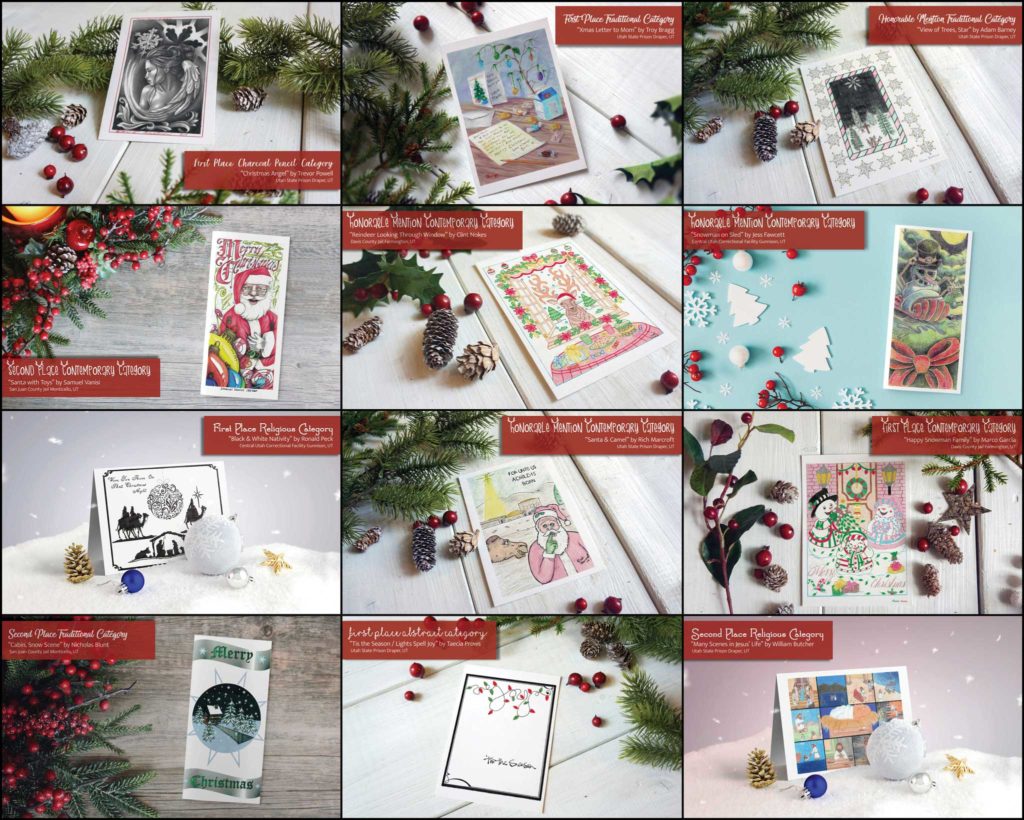
Inmate artists were encouraged to join UPAN in celebrating the 2019 Holiday Season through our 2nd Annual Holiday Card Contest. UPAN volunteer Audrae Rogers dedicated many hours in coordinating the contest, along with her husband Ernie who assisted the ever-expanding endeavor. Big thanks to Audrae for creating the contest, recruiting volunteers, compiling mailing lists, and getting the word out!
Many inmates don’t have anyone on the outside, and they seldom get letters or cards—and are often forgotten about around the holidays. The main idea behind the Holiday Card Program is to let them know they are not forgotten, and that someone cares about them. Inmates who receive mail let us know who they think could really use a boost of holiday cheer.
The Holiday Card Program is also great to showcase the wonderful talents of incarcerated artists by creating something most people can relate to, while humanizing and generating empathy for those spending time away from their families during the holidays.
Call for entries went out in the Vol. 6 No. 8 August 2019 UPAN Newsletter, and we are continually amazed at the great talent among our incarcerated loved ones. The deadline for entries was October 15th, 2019.
Artists shared their talents by designing a Holiday Card in any the following four categories: Religious, Traditional, Contemporary, or Abstract (or one in each of the four categories – for a total of four submissions per inmate).
UPAN received 12 entries this year from all over the entire state. On November 13th, 2019 winners in each category were selected by the UPAN Board of Directors for a total of 9 ballots. Those with access to the UPAN website can download, print, and mail the cards as holiday greetings to inmates and friends. Please see the winning entries below.
2019 Contest Winners
Artwork Requirements: Artists provided artwork in one of two available sizes:
- 5½ x 8½ inches (a 1⁄2 fold of an 8½ x 11 inch paper)
- Folds once to fit inside an A9 envelope
- 32⁄3 x 8½ inches (a 1⁄3 fold of an 8½ x 11 inch paper)
- Folds twice to fit inside a standard #10 envelope
Traditional Category
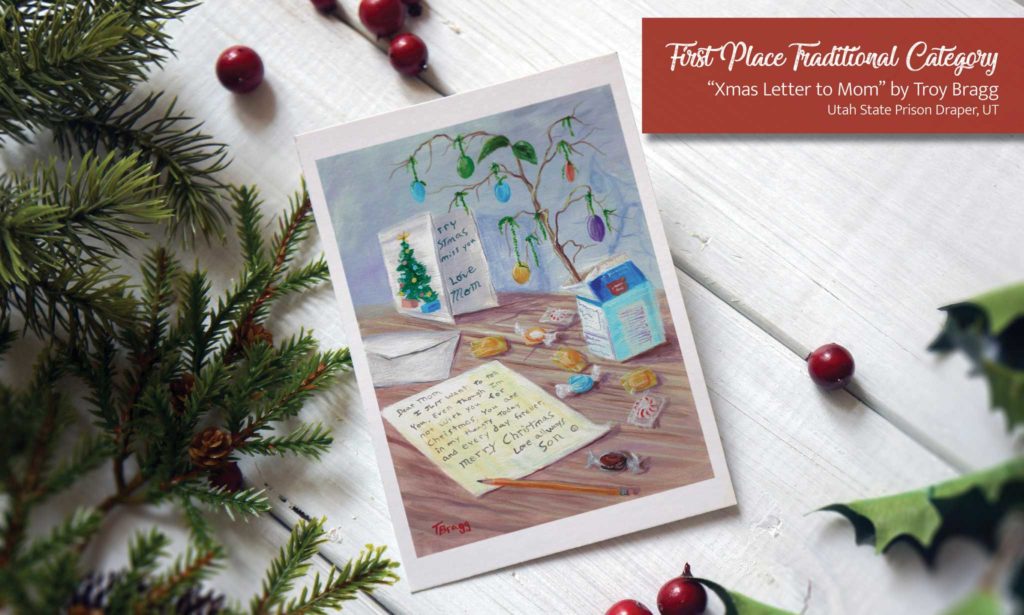
#73430 Wasatch Unit, Utah State Prison Draper, UT | Requires A9 Envelope
Download a printable PDF
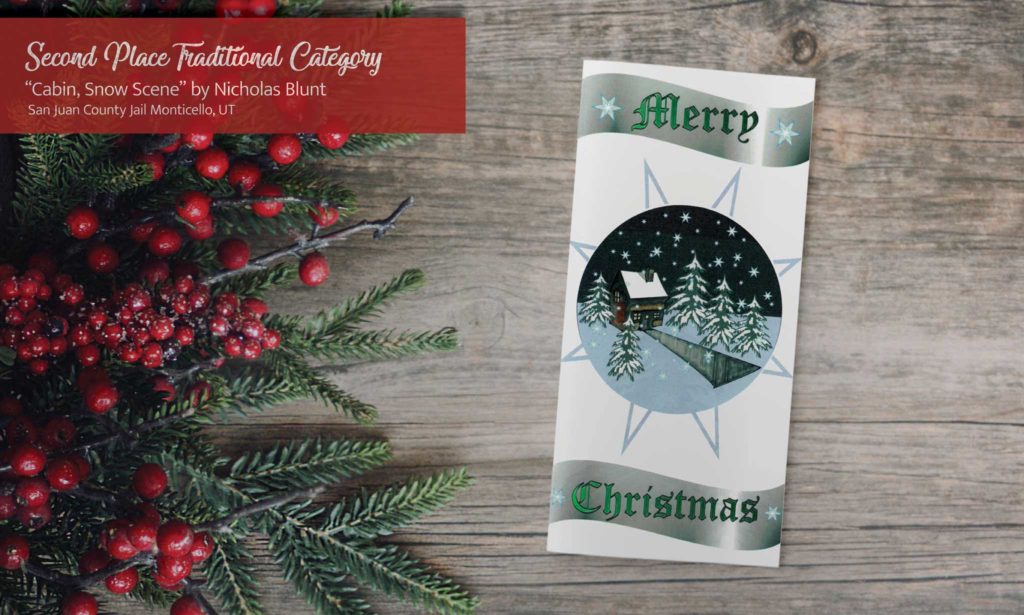
#218516 San Juan County Jail Monticello, UT | Requires #10 Envelope
Download a printable PDF (This artwork has optional inside design as well)
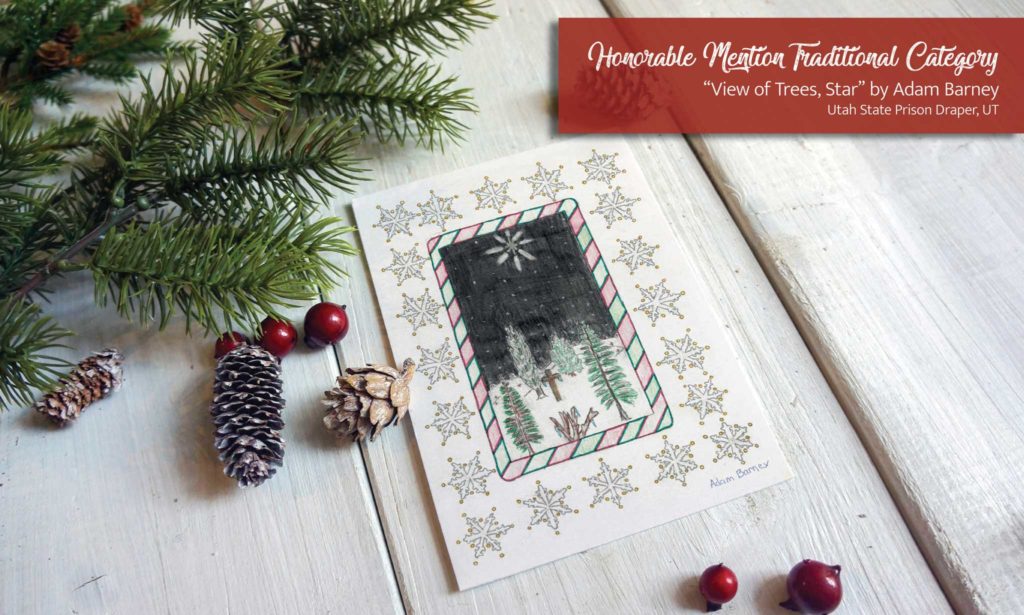
#222672 Olympus Unit, Utah State Prison Draper, UT | Requires A9 Envelope
Download a printable PDF
Contemporary Category
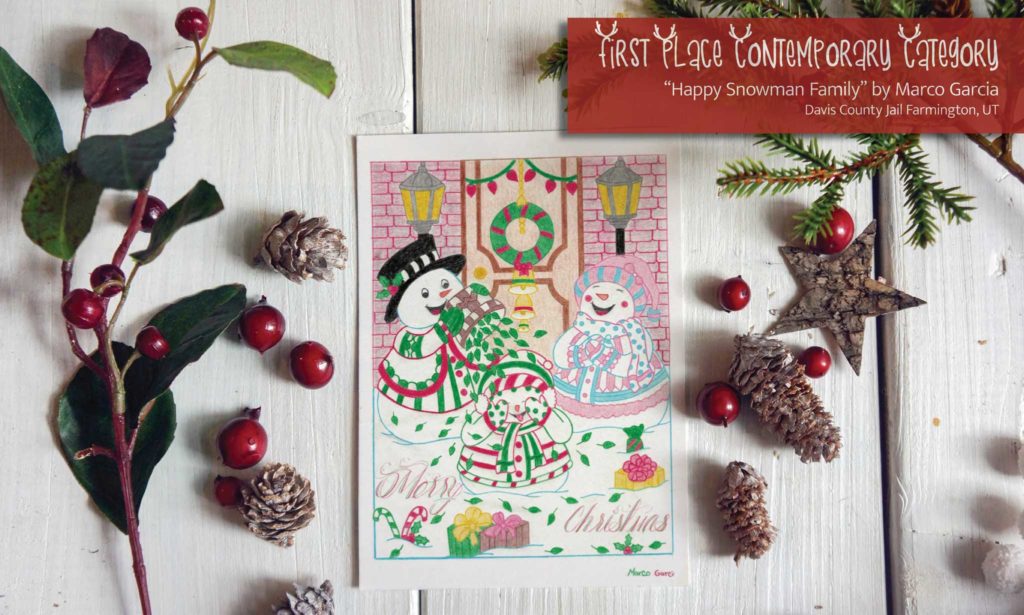
#2018-07919 Davis County Jail Farmington, UT | Requires A9 Envelope
Download a printable PDF
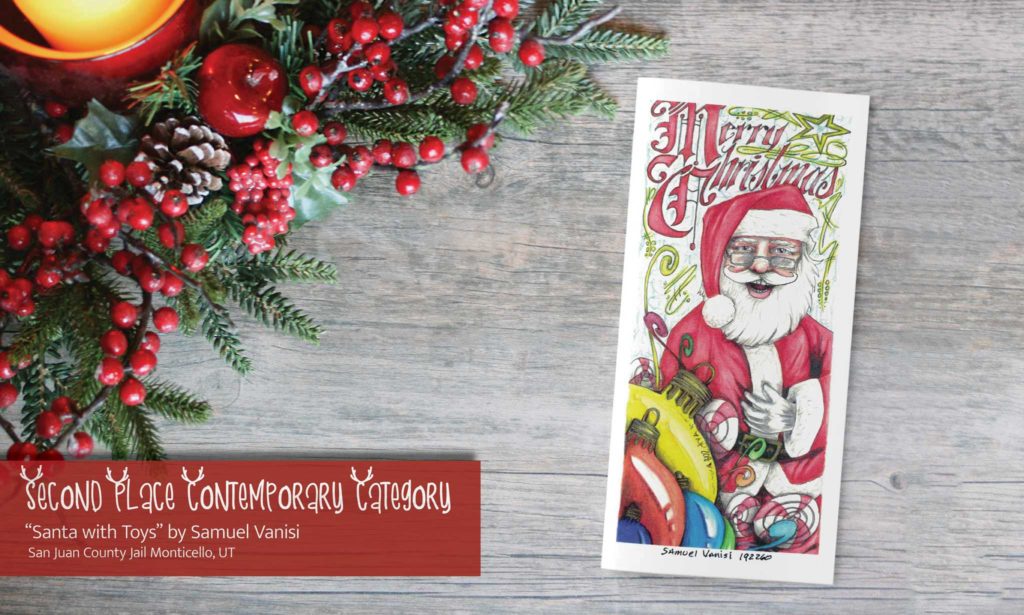
#192260 San Juan County Jail Monticello, UT | Requires #10 Envelope
Download a printable PDF
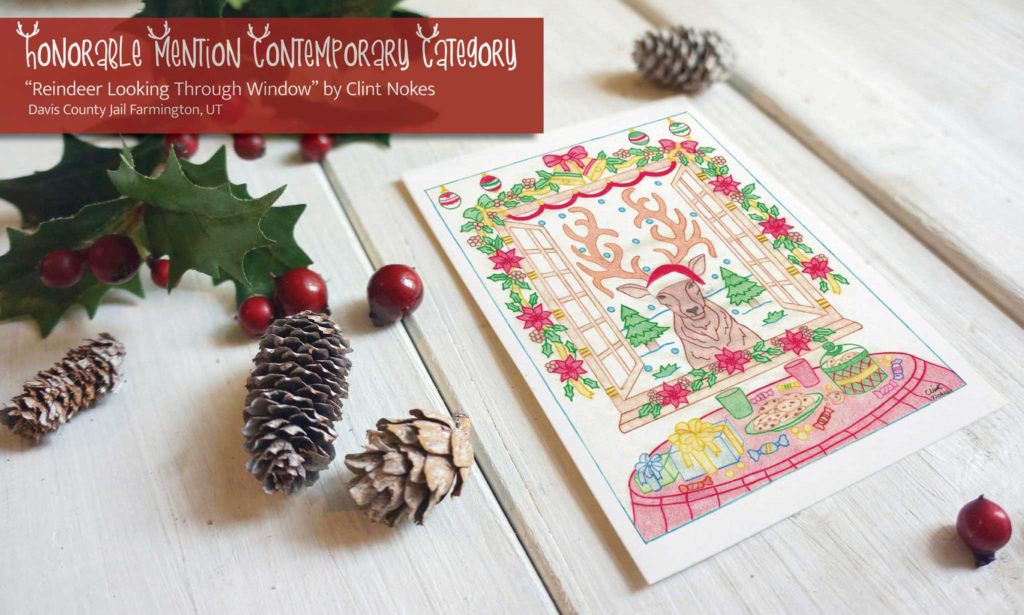
#2017-09540 Davis County Jail Farmington, UT | Requires A9 Envelope
Download a printable PDF
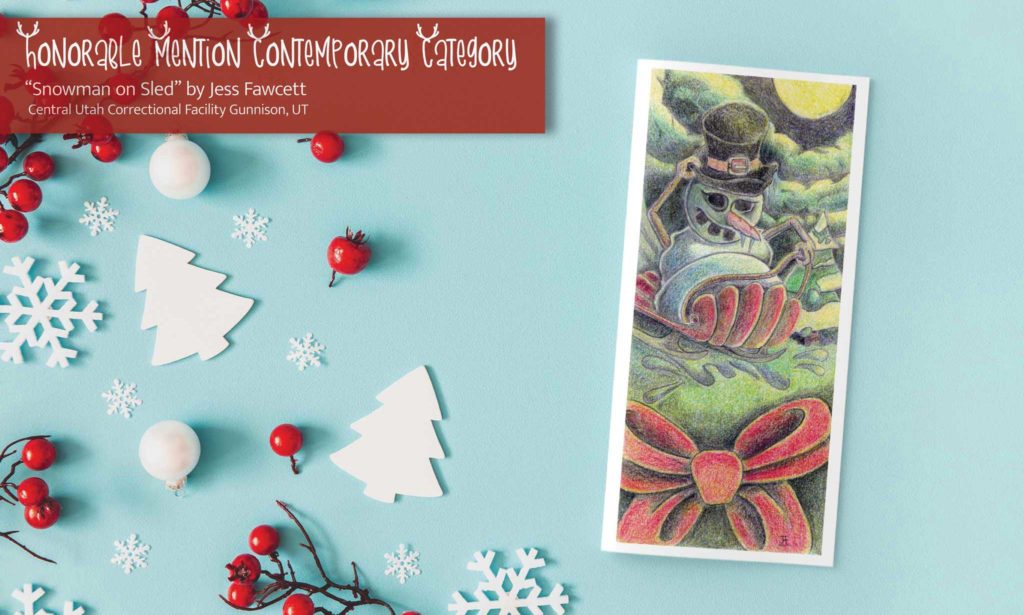
#230664 Henry Unit, Central Utah Correctional Facility Gunnison, UT | Requires #10 Envelope
Download a printable PDF
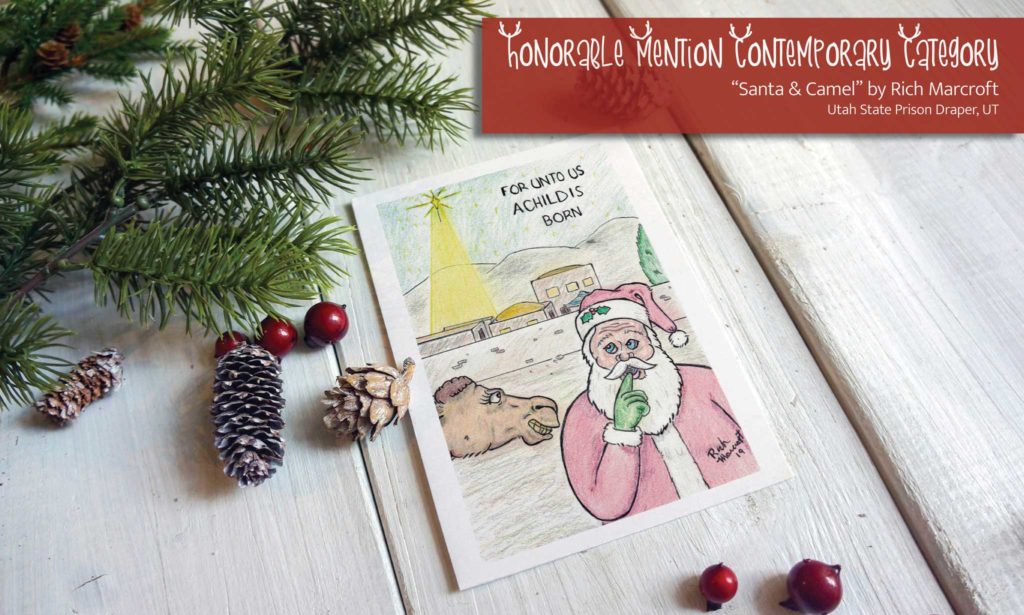
#185925 Lone Peak Unit, Utah State Prison Draper, UT | Requires A9 Envelope
Download a printable PDF
Religious Category
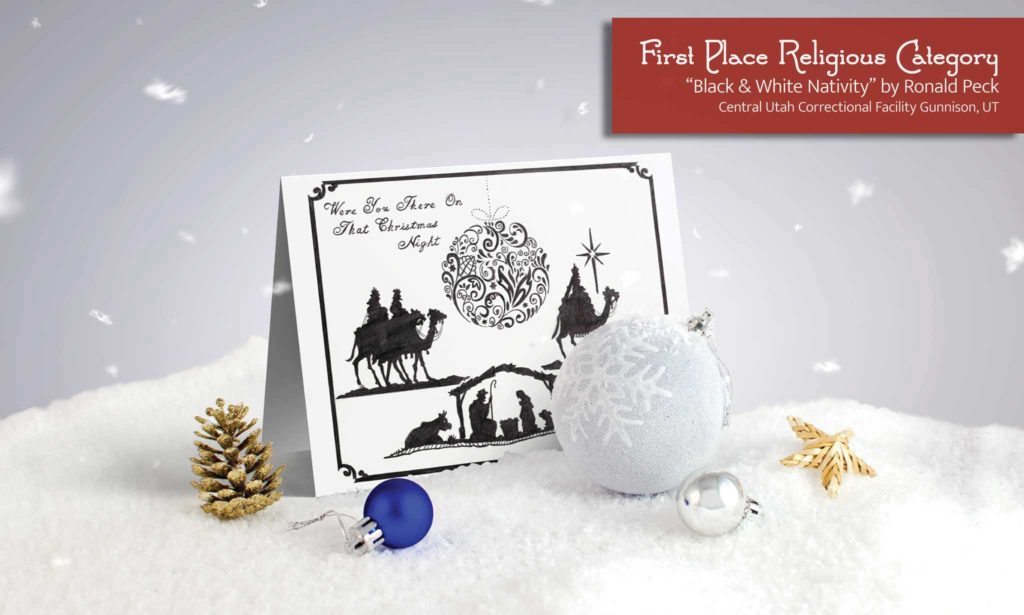
#180600 Henry Unit, Central Utah Correctional Facility Gunnison, UT | Requires A9 Envelope
Download a printable PDF

#217927 Promontory Unit, Utah State Prison Draper, UT | Requires A9 Envelope
Download a printable PDF
Abstract Category
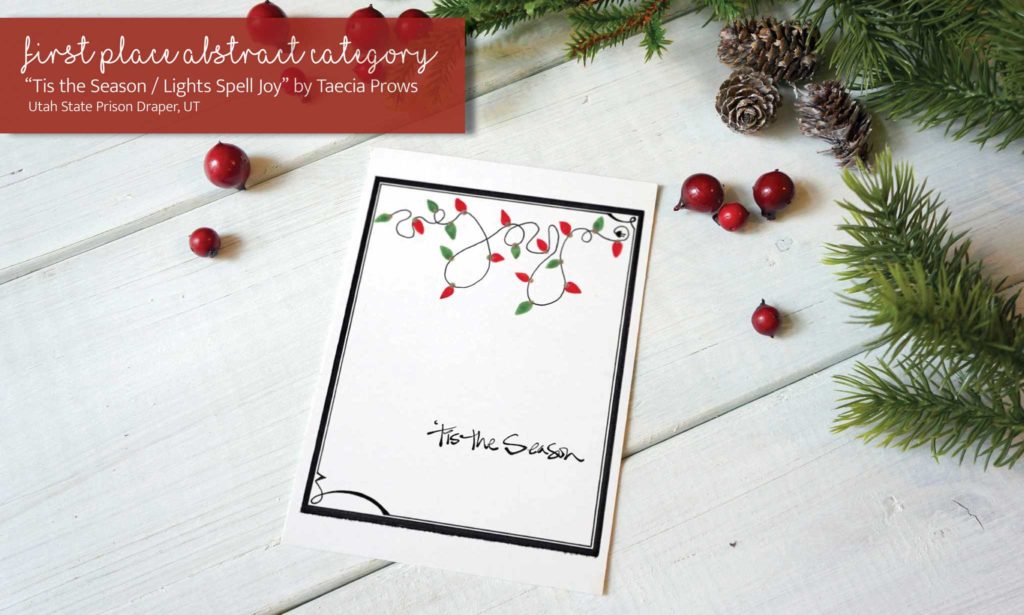
#65606 Timpanogos Womens, Utah State Prison Draper, UT | Requires A9 Envelope
Download a printable PDF
Charcoal / Pencil Category
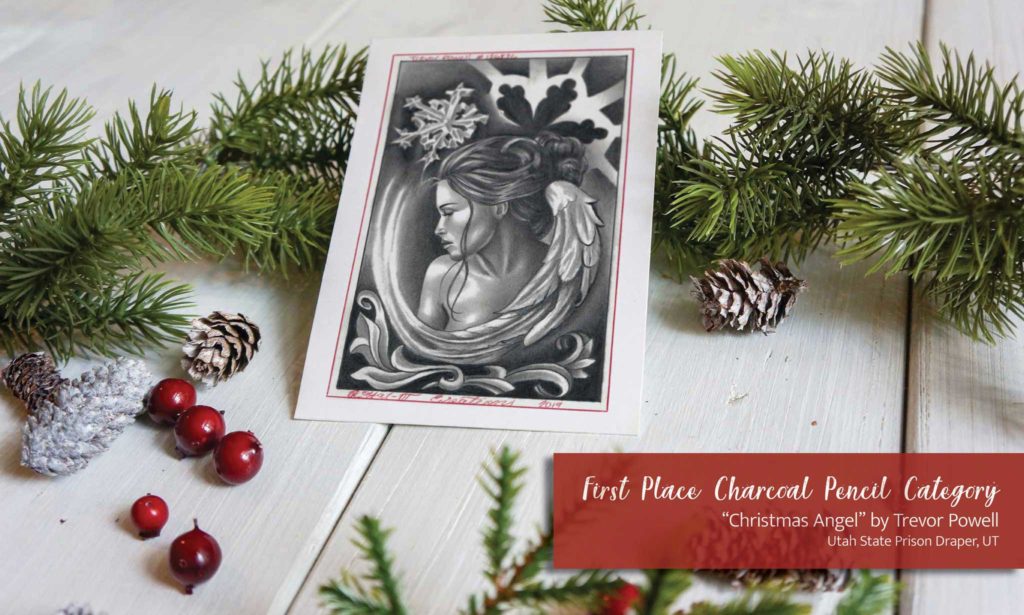
#136876 Promontory Unit, Utah State Prison Draper, UT | Requires A9 Envelope
Download a printable PDF
Note: Entries cannot be returned due to colors and new mail room rules. The original artwork will be retained and preserved with appreciation, respect and care and kept in a binder on display at UPAN meetings for viewing and enjoyment of attendees.
See Related: 2018 Holiday Card Contest Winners
Printing Instructions
Click the “Download a Printable PDF” link to open the greeting card artwork in Adobe Acrobat or other PDF-enabled application. In the Print window, choose the option “Actual Size” instead of “Fit” or “Shrink Oversized Pages”. We’ve already accounted for the white margin to accommodate most printers. Remember to print in Black only, color is not permitted at the prison unless you take a photograph and have it professionally printed in non-soluble ink. Please see New Prison Mail Restrictions Implemented by Utah Department of Corrections article below for more details. If you’re sending to a County Jail follow their specific guidelines (typically posted on their website).
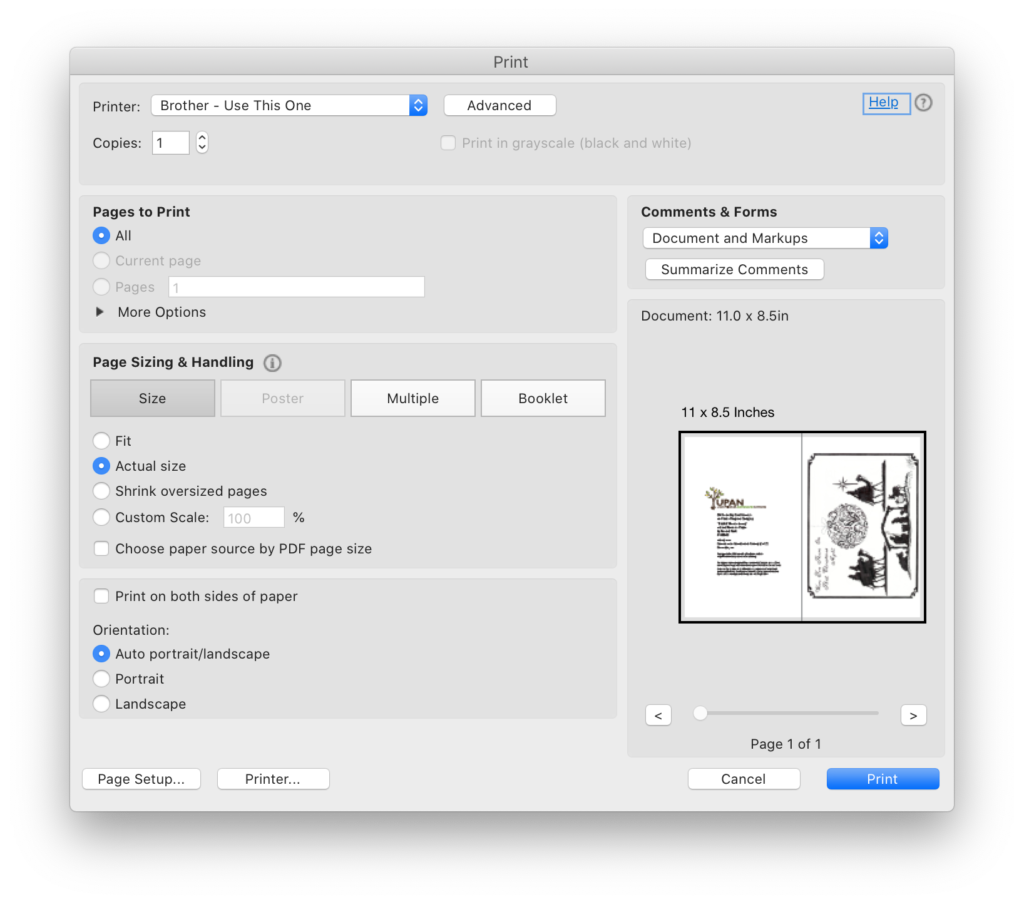
Holiday Card Mailing Volunteers Urgently Needed
UPAN is looking for 40 volunteers to mail Holiday greetings to inmates. Store-bought greeting cards are NOT allowed by new UDC mailing rules. Do not buy a box of Christmas cards to send! Use holiday images (internet public domain), create homemade cards, or print and use one of our UPAN 2019 Christmas Card Design Contest winners. Images may be reproduced on a copy machine and printed on NON-CARDSTOCK white paper then fold in half or quarters as a “card.” Inside the card you’re making—you may include a message if you like. Text must be copy-machine printed or handwritten with black or dark blue ink ballpoint pen (no Sharpies). Mail in a white (outside and inside) #10 or A9 envelope. Your Holiday service can mean a lot to inmates who rarely have contact with friends or relatives!
To Volunteer: Email Audrae Rogers at audraerogers3@gmail.com to volunteer. State the number of names you would be willing to print and mail. Volunteers will receive the inmates’ names, ID numbers, and addresses by email from Audrae. She will provide complete instructions about the cards, addressing the envelopes and mailing rules. For inmates in County Jails, special mailing instructions for that jail will be sent with the inmate’s name. Newsletter volunteer mailers are asked to mail holiday greetings to the inmates on their list.
New Prison Mail Restrictions Implemented by Utah Department of Corrections
In July 2019, an announcement was posted on the UDC website regarding additional restrictions for mail sent to prison inmates. They became effective August 1, 2019. Instructions about how to send a letter can be found on the Utah Department of Corrections website by going to the Family & Friends of Inmates tab > How do I…? Answers to Common Questions page. Policies on DG15 Mail and FD03 Inmate Mail can be found on the website as well.
Paper and Layers. Only single layer white envelopes and single layer white paper or stationery will be allowed. Ruled white writing paper with lines as a guide for handwriting will also be allowed. There is no limit to the number of pages in an envelope but the additional postage cost over the 5 or 6 pages that fits in a standard white #10 envelope will be required.
What is no longer allowed: The following types of envelopes, paper, stationery, and cards are now prohibited and being refused or denied and returned to sender:
- Color envelopes (including manila and multi-layer envelopes)
- Color paper or stationery
- Greeting cards, card stock or other multi-layered paper or stationery
- Any mail with paint, chalk, crayons, markers or high-lighters on contents or envelope will be denied.
SOURCE: UPAN directors contacted Sgt. Roberts regarding the mail policy with questions for clarification. This article is based on information he has provided to UPAN advocates.
Printer ink and pens. All ink used from printers should be black ink – not colored – on white paper. Ballpoint pens and pencil are allowed.
Gel-pen question. Several family members received differing answers from prison staff regarding the use of “gel pens.” According to Sgt. Roberts, gel pens such as a Pilot G2, Uniball gel, Paper-mate gel, or similar styles will be admitted. Gel pens that produce thick, gooey lines or those that have glitter in the ink will NOT be accepted.
Return address and mailing labels are still allowed but they will be removed before the envelope is forwarded to the inmate.
Postcards are limited to only pre-stamped white postcards sold by the post office. Sgt. Roberts stated that postcards can be considered on a “case by case basis.” As long as mail room staff can see completely through the white postcard and there is no obvious tampering, they will be allowed. If they cannot see through the post card or the edges have been tampered with, they will be denied.
Photographs are still accepted. Sgt. Roberts said photographs are still acceptable. UPAN recommends commercially produced photos that you can get at Walgreens, Walmart, or online at Freeprints.com or other outlets. The ink on these photos is not water soluble like some home / personal printer ink is, so does not pose the risk that the prison is trying to avoid.
Greeting Cards. Ideas for what could be substituted for greeting cards or holidays cards. UPAN families have communicated with the mail room and come up with ideas of how to adapt to these new rules. Sgt. Roberts indicated that since photographs are still allowed, families can take a photo of a greeting or holiday card and send it in a white envelope rather than sending in a conventional greeting card and its colored envelope. Also, a black and white copy of a holiday card on white paper placed in a white envelope will be accepted.
Drawings from children can still be accepted as long as they are either in pen on white paper (no markers, crayons, glitter, stickers, etc.). One UPAN mother takes color pictures of her children’s drawings and has them developed commercially and sends them in as photographs, and they are accepted.
Manila or colored envelopes from government sources. In response to an inmate’s concern about ability to continue to receive mailings from the Veterans Administration, which sends out its correspondence in manila (golden colored) envelopes, Sgt. Roberts said “currently we still will not allow those envelopes into the facility.” The mailroom staff has been making photocopies and sending in the material to inmates in white envelopes. He wrote in an email, “this practice will not change and we will continue to photocopy the envelopes from government entities.”
Goals & Purpose. What UDC is trying to achieve by implementing the new policy. UPAN has been advised that the new policy is in an attempt to enhance the safety and security of all incarcerated individuals, staff, and the public. Sgt. Roberts let us know that illegal substances are found within incoming mail on a daily basis. He shared that when inmates are using illegal substances, it interferes with them being successful in programming and impedes their positive reintegration into society. In addition, the distribution and use of illegal drugs in the prison can contribute to violence in the facility, as well as deaths. Staff opening the mail is also exposed to these substances which can result in illness to them.
Contraband. Sgt. Roberts stated that one of the most common substances the prison finds is the synthetic opioid, suboxone. Other illicit substances have been found as well. People have placed strips with drugs between the glued edges in colored envelopes and have even been known to slip them into card stock, or liquefy it and paint it onto colored greeting cards in order to send it in to prisoners. Thus, the new restrictions. In researching this, there are other prisons around the country who have been implementing more restrictive mail policies to combat this same problem.
Timeline for adjusting to the new mail policies. As of August 1st, the mail room has started to make photocopies of mail that violates these new restrictions. The black and white photocopies are sent to inmates and the originals are returned to sender with a notification explaining the new restrictions. Mail that already violates current policy will not be copied or sent to inmates but will be refused or denied consistent with current policy and practices.
NOTE: Starting Sept. 1, the mail unit will refuse or deny and return to sender any mail items that violate these new additional restrictions for mail sent to inmates. No photocopies will be made.